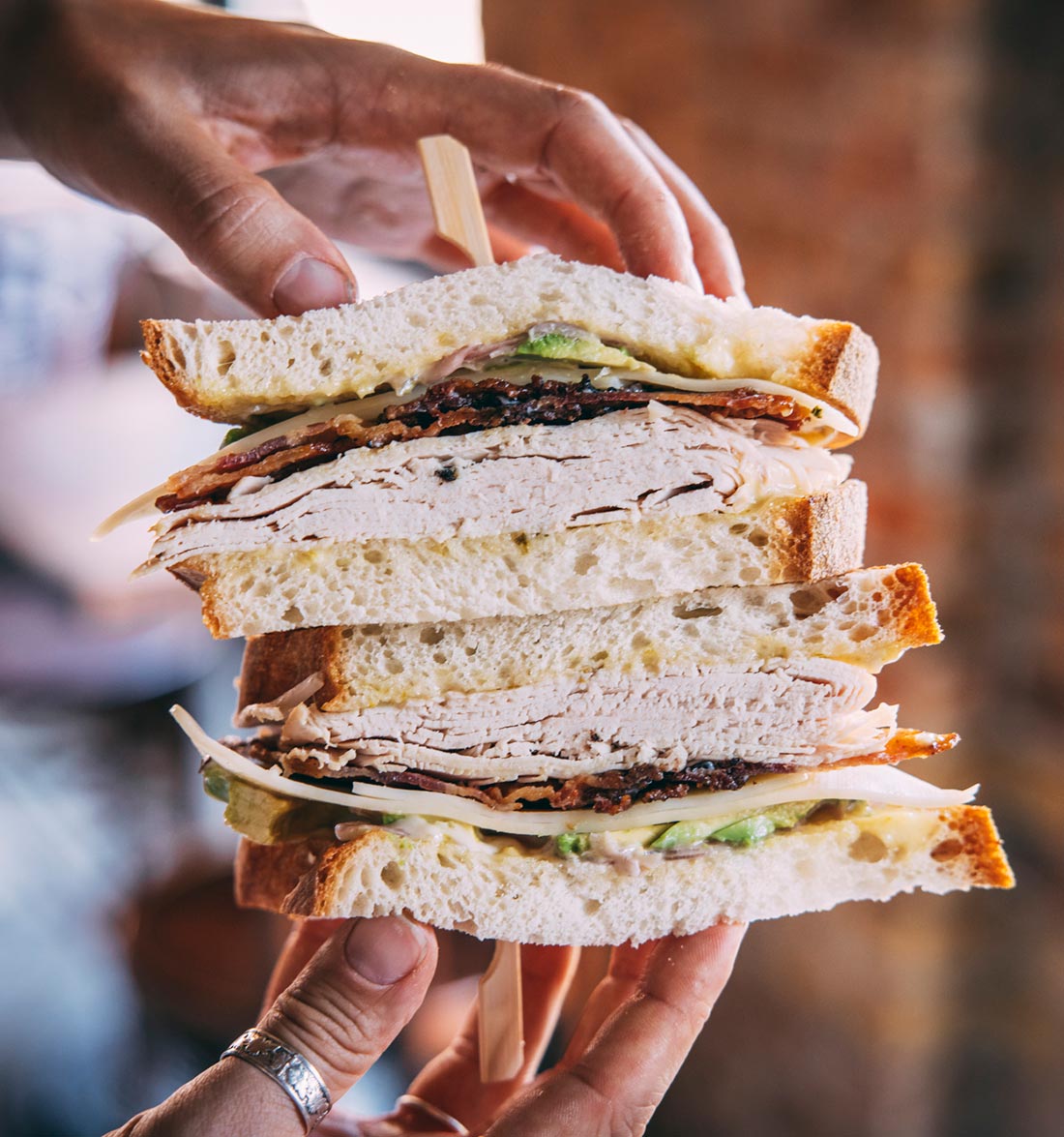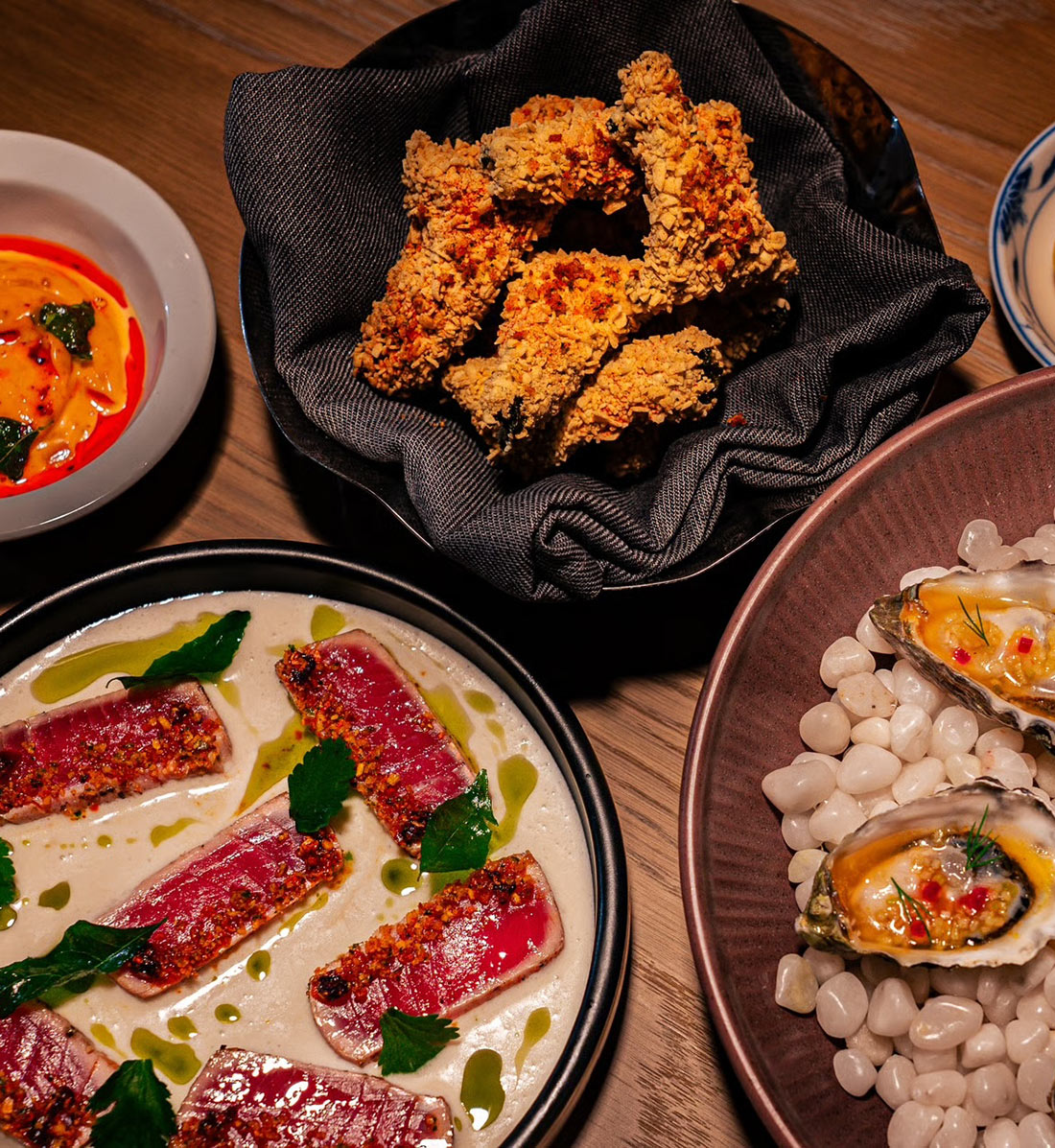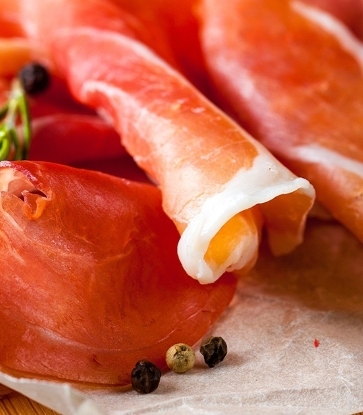The saying “the devil is in the details,” is particularly applicable to the modern dining experience.
“Eating out today goes way beyond just good food,” says Nadav Greenberg, executive chef of Shmoné in New York City. “It's a complete experience that you can enjoy with all the senses… way before any plate hits the table.”
From the glassware and playlist to the lighting and even the bathroom, 10 chefs from restaurants in The MICHELIN Guide share their insight about the details guests shouldn’t overlook at their next dining experience.
Aromatics
"The first thing I notice is food aromas; you can tell the identity of the kitchen and restaurant based on the smell of a restaurant,” says Costa Spiliadis, chef/founder of Estiatorio Milos in Miami. “The aroma of boiled wild greens signifies a Greek restaurant. The aroma of garlic signifies an Italian restaurant. An aroma of fat burning signifies a steakhouse. You must smell the food when you arrive; it connects the diner to the real food of the restaurant, not the virtual representation of it and you can detect the quality of the restaurant by the pleasantness of the aromas."Technology
“Walking into a restaurant and seeing the majority of the guests on their phones,” says Brian Saito, sous chef and director of business of odo in New York City. “While this might be more of a cultural issue than an issue with the restaurant, I can't help wondering if the experience is not satisfying or immersive enough for the guests.”
Connection
“I always seek a connection that transcends beyond the mere transaction of service, aiming to elevate the relationship between the staff and guests,” shares John Fraser, chef of Ardor in Los Angeles. “Along with a warm greeting and a sincere smile, an attentive approach is much appreciated beyond the initial greeting. It’s as simple as offering a black cloth napkin to a guest dressed in all black instead of a white one that could leave a trace on their outfit,” he explains. “These thoughtful touches show that the restaurant pays attention to the little things that matter, creating an environment where guests can relax, enjoy, and feel truly at home.”Food on Display
When food is displayed upon entry “as if it was a painting on the wall or a sculpture in the room, it shows the diner, even before the first bite, that this place takes pride in what they are serving and the quality of their ingredients,” shares Gilberto Cetaina, chef of Holbox in Los Angeles. “Things like salamis hanging in a fermentation chamber, wines on display behind a glass door wine cooler, aged cheeses, herb and vegetables gardens, or a fresh shellfish display, displayed where guests can see them gets me excited about a restaurant.”The Bathrooms
“I find that bathrooms are often overlooked, but they reveal a lot about a restaurant’s attention to detail,” shares Sujan Sarkar, chef-owner of Indienne in Chicago. “When a restaurant carefully considers every aspect of the bathroom—from the layout of the amenities, like the type of soap and hand towels used, to the overall design and cleanliness, it speaks volumes.”
Body Language
“The first thing I notice entering a restaurant is usually the body language of the first person to greet me,” says Ian Palazzola, executive chef of Frasca Food and Wine in Boulder, CO. Are they smiling, do they seem stressed, are they happy, how engaged are they? No matter the style of dining, a focused and happy group of people create a better experience no matter where you are or what level of dining.”Greetings
“A big pet peeve of mine is not being greeted when you walk into a restaurant,” says Cody Cheetham, executive chef of Tavernetta in Denver. “Even if the staff is busy, a simple ‘Welcome in, we’ll be right with you!’ goes a long way toward making a diner feel like a proper guest. This is true whether you are at a mom and pop diner or a MICHELIN-Starred restaurant.”Cleanliness
“I notice the cleanliness of the entrance, especially the windows,” says Gabriel Kreuther, chef of Gabriel Kreuther in New York City. “I check to see if there are fingerprints on the doors and windows. Then, I check the tables to see if the glasses and the silverware are clean — are there water marks on them? Are the flowers refreshed or do they look wilted? Are the napkins nice and crisp with a clean smell?
Playlist
“If you’re only playing top 40 bullshit, no way. I want to play the music the team is listening to on their way to work,” says Johnny Spero, chef of Reverie in Washington, D.C. “I am tired of listening to Billy Ocean every single time I sit down for a tasting menu. I care about this because it's not just about cooking great food, it's about setting the vibe with the music and the lighting to set the table for everything. The food should have its own personality, but the rest of the experience needs to follow.”Lighting
“Lighting is crucial,” advises Sarkar. “If the lighting is too bright, guests may feel overexposed, making the environment feel sterile or overly intense. On the other hand, if the lighting is too dim, diners may struggle to see the menu, appreciate the presentation of their food, or engage with their dining companions. The perfect balance in lighting creates an inviting atmosphere, encouraging guests to relax and immerse themselves in the experience. The best restaurants master this balance, using lighting to subtly guide the mood.”Glassware
"For me, what you drink from really matters,” says Juan Correa, partner of Llama Inn in New York City. “I find it almost more psychological than technical: How much a glass weighs, its texture and finishes all matter and can enhance your drinking experience. A great glassware selection, to me, shows how much thought has gone into the operation. Particular pet peeves of mine are oversized water glasses and bottom-heavy rocks glasses."
Hero image: Max Flatow / Shmoné
Thumb image: Mike Thurk / Frasca





















